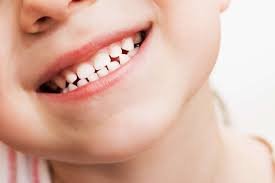Introduction
Teething is a natural but sometimes difficult phase in a baby’s development. Parents often find themselves struggling to soothe their baby’s discomfort while ensuring proper oral pediatric dental care. Knowing what to expect and how to help can make this stage easier for both baby and parents.
This guide explores the teething process, common symptoms, remedies for soothing sore gums, and tips for maintaining oral hygiene during this crucial time.
Understanding Teething: When and What to Expect
1. When Does Teething Begin?
Teething typically starts between 4 to 7 months of age, though some babies may begin earlier or later. The first teeth to appear are usually the lower central incisors, followed by the upper central incisors.
2. Signs of Teething
Babies exhibit different symptoms when teething. Common signs include:
- Excessive drooling
- Irritability or fussiness
- Swollen or tender gums
- Biting on objects
- Trouble sleeping
- Decreased appetite
- Mild temperature increase (not a fever)
3. How Long Does Teething Last?
Each tooth eruption can take a few days to a week. The full teething process continues until around age three, when the last set of molars emerges.
How to Soothe Your Baby’s Sore Gums
1. Teething Toys
Rubber or silicone teething rings help massage the gums and provide relief. Look for BPA-free options designed for teething babies.
2. Chilled Items
Cold teething rings, washcloths, or refrigerated spoons can help numb sore gums. However, avoid freezing items as extreme cold can harm sensitive gums.
3. Gentle Gum Massage
Using a clean finger, gently rub your baby’s gums in circular motions to relieve pressure and discomfort.
4. Breastfeeding or Bottle Feeding
For some babies, sucking provides relief. If bottle-feeding, ensure they do not develop a habit of chewing on the bottle nipple, as it could affect oral development.
5. Over-the-Counter Teething Gels
Consult your pediatrician before using teething gels or pain relievers. Some teething gels contain benzocaine, which is not recommended for infants under two years old.
6. Distraction Techniques
Playing with your baby, singing, or offering favorite toys can help divert their attention from teething discomfort.
Teething and Oral Hygiene
1. Cleaning Baby’s Mouth Before Teeth Appear
Even before the first tooth erupts, parents should clean their baby’s gums with a damp cloth or gauze after feedings to remove bacteria.
2. Brushing the First Teeth
Once the first tooth emerges, use a soft-bristled baby toothbrush and a small amount of fluoride toothpaste (about the size of a grain of rice) to clean their teeth.
3. Avoid Sugary Liquids
Prevent tooth decay by avoiding sugary drinks, including juice, in bottles or sippy cups before bedtime.
4. Schedule the First Dental Visit
The American Academy of Pediatric Dentistry recommends that babies visit the dentist by their first birthday or within six months of the first tooth appearing.
Conclusion
Teething can be a challenging phase, but with proper care and soothing techniques, parents can help their babies get through it comfortably. Understanding teething symptoms and providing safe relief methods ensures your baby stays happy and healthy during this developmental milestone. Always visit nearest pediatric dentist by searching pediatric dentist near me.



